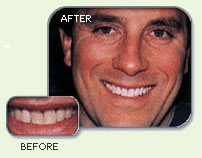How white is your child’s teeth?
Actually, no one has “white” teeth. Some are naturally yellow-white, while others are grey-white with a variety of shades in both groups. But none are white-white.
What teeth whitening does is eliminate stains caused by food, drink, tobacco, etc. It also changes, in moderate degrees, the natural color of your teeth. They will not become white-white, but they will definitely be cleaner looking accompanied by a natural brightness.
So, how much cleaner and brighter looking will your teeth be after you complete this treatment? You can reasonably expect a two- or three- shade change. The end result will depend on the structure of your teeth and the type of stain.
If you suffer from tetracycline, fever-induced or mineral stains, your treatment time most probably be extended. These types of stains are very difficult to eliminate completely, but this procedure can lessen the severity of such stain. With determination and practice, you will experience a significant change.
Typically, it takes anywhere from 2 to 5 years after treatment before your teeth return to the condition they were prior to the treatment. How you take care of your teeth has a lot to do with this particular longevity issue.




